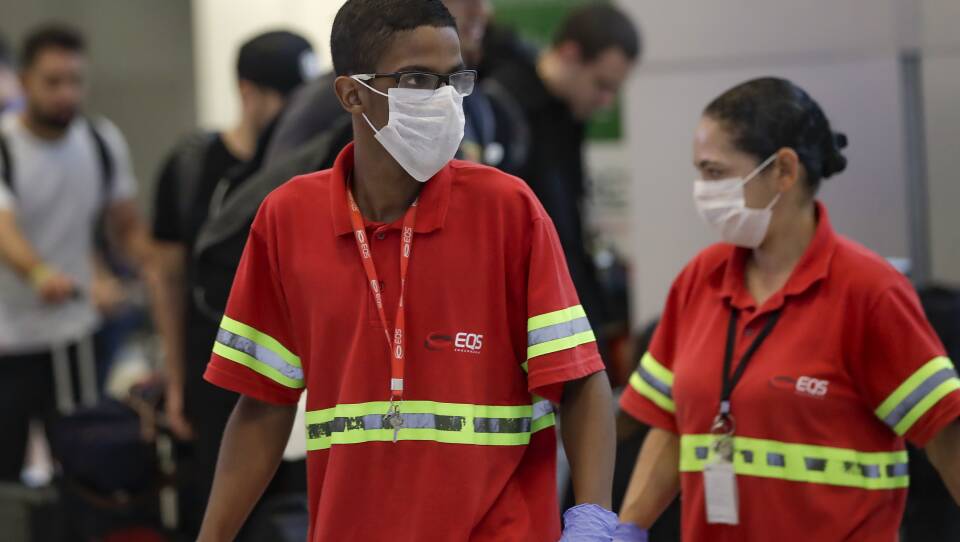Like most of us, I’m confused and concerned about the latest news regarding COVID-19 and the Delta variant.
Everyone in my immediate circle, including me, is fully vaccinated, healthy and, if no longer young, then not elderly yet, either. So I’m confident that if any of us got sick, we’d experience nothing more than mild symptoms.
But what about others? We all encounter people on a daily basis who can’t be vaccinated because they’re too young or have compromised immune systems. If we don’t mask up once again, are we all going to turn into carriers who fuel yet another surge of a disease that has killed 613,000 of our fellow Americans?
In addition, there’s the resentment we can’t help but feel toward those who resisted masking and are now resisting vaccines. Josh Marshall, writing at Talking Points Memo, put it this way: “Masking is coming back largely because of the actions of the unvaccinated and also largely for the benefit of the unvaccinated [Marshall's emphasis]. The burden of non-vaccination is being placed on those who are vaccinated. That basic disconnect is our problem.
“That disconnect places no effective pressure on the voluntarily unvaccinated while sowing demoralization and frustration and contempt with public authorities among those who’ve gotten the vaccine,” he continued. “No good comes of that combination.”
So where does that leave us? More than anything, I think the media need to do a better job of communicating risk. Even with Delta, which is far more contagious than the original iteration of COVID-19, the vaccines are highly effective. No one died in the now-infamous Provincetown outbreak, and life there is already returning to normal. As President Joe Biden said recently, what we’re dealing with now is a “pandemic of the unvaccinated.”
There are all kinds of data that show Delta isn’t a problem for people who are vaccinated. For instance, Zeynep Tufekci of the University of North Carolina tweeted on Sunday that just 6,587 have been hospitalized among the 163 million people who’ve been vaccinated. That’s an almost unmeasurable 0.004%.
There’s good news on the vaccination front, too, as the number of people getting the shots has been rising since mid-July. Presumably there are several reasons for that, such as fear of Delta as well as a sudden burst of semi-responsible behavior by leading Republican officials and right-wing media figures. More good news: Walmart and Disney announced over the weekend that they’re going to require their employees to be vaccinated.
The Centers for Disease Control and Prevention hasn’t covered itself with glory, arguably sending the country into a panic over the Provincetown outbreak before all the data were in. But as scientists who are responsible for public health, they’re going to try to provide guidance in real time, and sometimes they’re going to get it wrong. Which means that the media need to do better by not obsessing over infinitesimal numbers.
“Scary, sensational headlines about P-town have sparked confusion this week, but the problem is much bigger than a single outbreak in a single town,” said Brian Stelter, the host of CNN’s “Reliable Sources,” in his Sunday commentary. “The problem starts with the CDC and its absolute failure to communicate clearly and effectively. Sloppy news coverage then makes a bad situation worse.”
As Stelter noted, COVID hospitalizations are up nationally because of the Delta variant. But they’re up far more in states with low vaccination rates like Louisiana than in states with high rates like Vermont. If you and your family have been fully vaccinated, the pandemic is largely over.
My attitude about COVID since the beginning of the pandemic has been to take it seriously and follow the guidelines and mandates, but not to exceed them. I taught two of my classes in person and took public transportation throughout — masked, of course. I was thrilled when the mask mandate was dropped, and I’m not eager to go back to it.
But I will if those are the rules. I’ve gone grocery shopping a couple of times during the past week, and I’ve pulled out my mask and put it on. I didn’t think it was necessary, but most of the other shoppers were wearing them, so I didn’t want to seem cavalier.
This week we’re going on vacation, and on our way home we’re going to visit my 92-year-old father-in-law in upstate New York. He’s fully vaxxed, but that presents a dilemma, doesn’t it? The vaccines simply don’t work as well among the elderly. Maybe we’ll mask up. Maybe it will be nice enough that we can sit outside.
The past 17 months have been a nightmare for the country and the world. Just a few weeks ago, it seemed like it might be over. It wasn’t.
But that doesn’t change the fundamental facts. We are in a far better place than we were during the height of the pandemic. Vaccines work. With some adjustments, life can return to normal. And the media need to report this ongoing story with context and nuance rather than sending everyone into a panic with each twist and turn.
GBH News contributor Dan Kennedy’s blog, Media Nation, is online at dankennedy.net.







